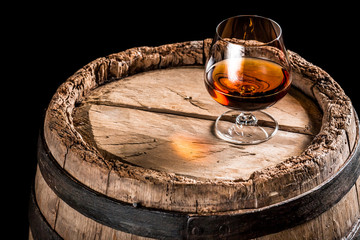Besides the region of Champagne or the wines of Bordeaux, the region of Cognac is the real pride of the nation. It is one of the country’s few regions that consumes the least alcohol. In fact, more than 95 % of its production is exported all over the world and its own consumption is steadily decreasing on the French markets. However, certain large properties and other associations have been trying to develop new kinds of cognac consumption and to democratise its consumption for about 20 years now – Cognac “on the rocks”, with Gin Tonic or even by introducing new products such as the Cognac Blanc (unaged), but nothing works out…
Do you know the history of the region of Cognac?
In the 19th century, a professor of geology called Henri Coquand studied the region with the aid of a wine taster. They developed a system for categorising the soils according to the quality of the so-called “Eaux-de-vie” (water of life) which could be produced there. This study was revived and used as base for drawing up the decree of 1938, which limits the six different Crus of the region: The Grande Champagne, Petite Champagne, Borderies, Fins Bois, Bons Bois and the Bois Ordinaires.
So, it is less than a century ago that the growing region of Cognac was defined from the north of the Aquitaine basin to the edge of the Atlantic. With a yearly production of about 160 million bottles, the vineyard expands to 75,000 hectares around the city.
Which legislation regulates the production of cognac vintages?
In 1962, the Bureau National Interprofessionnel du Cognac (BNIC) completely prohibited the cognac’s commercialisation as there were numerous frauds as it is very difficult to determine the vintages of these spirits exactly. One should not forget that the cognac is, first of all, the result of a sophisticated mixture of different Eaux-de-vie with subtle and varied vintages. It was just in 1989 that the BNIC lifted this ban and agreed on a new drastic legislation!
To be capable of selling cognac vintages, properties have to consult a sworn representative whose task will be to seal, register and control the barrels during the production year and the aging process (inventory, sampling, bottling…). A factor which lets the prices rapidly increase. That is why it gets more and more difficult to find cognac vintages.
To stick with the production of cognac,
The entire secret of an excellent cognac is the mastery of the composition! The cellarers keep different Eaux-de-vie up to seven years; they store them in barrels before mixing them, in order to create Eaux-de-vie, which are constant in their taste but from property to property unique. In the most famous properties, this job is most often not done by wine makers or distillers, but rather by Assembler dealers.
The region of Cognac allows assemblers, thanks to its geographic scope, to play with numerous flavours that make their products unique and incomparable. A cognac made out of grapes that originated from Île de Ré and Île d’Oléron includes iodine nuances, whereas a cognac made out of grapes from the Borderies is known for its violet flavours.
Cognac: Did you already know that…?
- that after the composition of different Eaux-de-vie and after the filling into barrels, caramel can be used to adjust the colour of the cognac at the end?
- that one hears more and more often that the name “Champagne” for the cognac’s appellation has nothing to do with the region of Champagne-Ardenne? The reason is that those two regions share one commonality, which is the soil (chalk soil)!
Unlike wine, cognac does not develop in a glass. Only the pores of oak barrels allow the cognac to age. So, there is no reason for storing your bottle for years. Do yourself a favour: Open the bottle and simply enjoy it!





